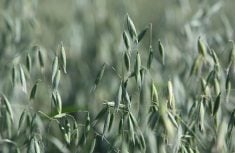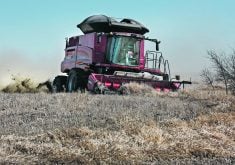Avoid heavy fall grazing
While producers may be tempted to graze pastures in the early fall, significant plant damage can be caused by heavy grazing after growth has stopped.
Michel Tremblay, crop development specialist at Saskatchewan Agriculture and Food, says an understanding of basic plant structure and chemistry will help to explain the harmful effects of heavy fall grazing.
A grass tiller has several parts: stem; roots, nodes or joints; internodes; a growing point that initially produces leaves nd may eventually become a seedhead; and dormant buds. The buds are located on nodes at the base of the shoot, on the stem, and on stolons or rhizomes.
Read Also

VIDEO: Ag in Motion documentary launches second season
The second season of the the Western Producer’s documentary series about Ag in Motion launched Oct. 8.
When the original growing point is grazed off, the dormant buds can potentially produce new tillers with new growing points. The plant bushes out and becomes leafier. But these dormant buds are also responsible for new spring growth and, once dormant, must survive the winter to produce tillers for next year.
Perennial grasses must be allowed to manufacture and store sufficinet carbohydrates to remain productive.
An increase in energy reserves in crowns and buds in the latter part of the growing season is necessary for spring tiller development, said Tremblay. “Severe grazing near the end of the season obviously reduces the production of crown tissue.”
Hard grazing can also remove insulating material from the plant crown, reducing the added insulation of snow trapped by foliage. Unprotected crown buds or new tillers are at risk of winterkill.
Tremblay says rotational grazing – where different fileds are grazed last yeach year – helps allow adquate time between the end of grazing and the development of buds.
Pastures used specifically for fall grazing can also alleviate the stress on less well-adapted species – Tremblay said Russian wild rye and Altai wild rye are excellent late-season grasses.
– Saskatchewan Agriculture
Foxtail likes minimum till
Foxtail barley has recently made inroads on non-saline, reduced-tillage soils.
Cultivation readily controls this weed, but as farmers strive to save energy and protect their soils by reduced tillage, unexpected weed problems like foxtail barley emerge.
Foxtail barley – also known by wild barley, skunk grass, skunk-tail grass, squirrel-tail grass and tickle grass – is a native, perennial species widely adapted to the Prairies.
It is short-lived, shallow-rooted perennial bunchgrass that grows from buds in a crown, just below the soil surface. Seed is widely spread by the wind and harvest equipment. some dispersal also occurs when the rough awns, or beards, sptick to animals and people.
Because of its shallow fibrous root system (unlike the deep rhizomes of quackgrass or rootstocks of Canada thistle), established foxtail is easily controlled by moldboard or chisel plowing. Spring seedbed preparation by sicing or cultivation and harrowing controls seedlings.
But in conseration tillge systems, control of foxtail barley is much more difficult. There are no selective herbicides for its control in cereal crops; those used oilseed and pulse crops control seedlings, but don’t work on established plants.
Glyphosate applied at normal rates before planting kills seedlings, but a three- to four-fold increase in rate is needed to control established foxtail barley.
The Agriculture Canada Research Centre in Lethbridge, is working to improve control of faxtail barley in reduced tillage systems. It is studying the effects of crop rotation, row spacing, seeding rate, fertilizer placlement and rates, and timing and rates of various herbicides on foxtail barley and crop yields.
This will help producers practice conservation farming without foxtail barley becoming a major problem.
– Agriculture Canada
Keep shelterbelts clean
Since 1982, more than 16,000 kilometres of single-row shelterbelts have been planted on the Prairies.
The biggest problem in established shelterbelt trees is weed competition. Weeds adversely affect tree growth but there is little information on the exact effect of weeds on trees in our semi-arid climate.
Bill Schroeder of the investigations section of the PFRA Shelterbelt Centre at Indian Head, Sask., has been trying to gain an understanding of how weeds and trees share the moisture and nutrients in the soil. In 1990, a study was initiated at a field site near Indian Head to look at the affect of weed competition onthe growth of young green ash trees.
In each of the three growing seasons, weed competition reduced tree growth by 40 percent or more.
An interesting finding of this study was that in wet years the soil mositure content around weedy and clean trees was similar throughout the growing season. In other words, trees in the weedy plots were not suffering from a lack of moisture. Why did weed competion reudce tree growth if soil moisture was not a problem?
It seems that weeds hindered growth of the green ash trees by competing for soil nutrients, especially nitrogen. Weeds most often compete with trees for moisture, but competition for soil nutrients is also a concern.
This study further reinforces the fact that weed control is essential for establishment of shelterbelts even in wet years because weeds rob trees of both moisture and nutrients.
– PFRS














